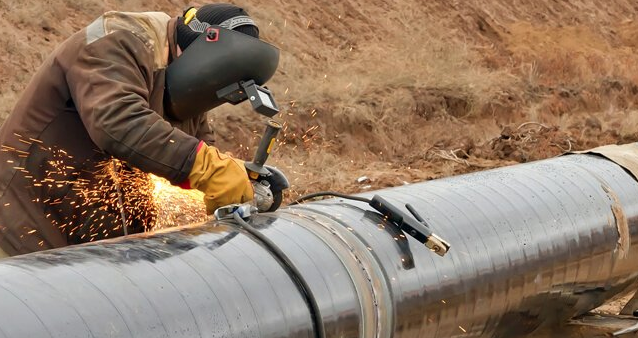When making the perfect weld on a section of pipe there are many variables that go into it. Whether it’s about welding high-pressure pipe, high purity pipe for food and beverage industries or pipe for the oil and gas industries, there are a number of mistakes that lead to problems when pipe welding.
Read on to see the next set of mistakes welders can make when welding pipes and some pipe welding techniques needed to avoid these mistakes when on welding jobs.
If you haven’t read part 1 of this blog, click here for more mistakes to avoid when welding pipes.
- Incorrect type or size of drive roll
With flux-cored and solid wires it is critical that the right size of drive roll is used. Flux-cored wires should be used with a knurled drive roll, whilst solid wires should be used with a standard V drive roll. Welders who incorrectly use a standard V drive roll with flux-cored wire can usually notice the wire slipping and then crank down on the drive roll tension to hold it in place, which then crushes the cored wire.
One thing to remember with this process is that if you have to crank on the wire tension it usually indicates something else has gone wrong with the process, i.e. wrong drive roll or drive roll size or clogging in the liner.
- Avoid adding cleaning solvent or lubrication to your dust pad
Some shops will add a dust pad, a small piece of fabric, just prior to the drive roll system in an effort to remove any final contaminants from the wire. On its ow this is fine, but some shops tend to add a lubricant or cleaning solvent to this pad in an effort improve feeding or “clean” the wire. This does the opposite. These oils in fact contaminate the wire and can lead to weld defects. Alternatively or to add protection, you could add a spool cover to protect the spool of wire from airborne contaminants.
- Incorrect nozzle
Different sizes and types of nozzles are required with different MIG processes. A tapered nozzle cannot accommodate the gas flow requirements of the pulsed MIG process and inevitably leads to improper gas coverage of the weld. It is paramount to know which nozzles match up with each process or variable and use them accordingly.
- Choose a MIG gun rated to handle peak amperage when pulsing, as well as mixed gases
When specifying a MIG gun for pipe applications, shops will often select a MIG gun based on the average amperage of their application. They may buy a 250-amp MIG gun and have an average amperage of 250 amps, but will submit the gun to considerably higher amperages during the peak of the pulsing cycle. These guns, however, are not designed for that peak amperage and can burn out at a faster rate.
- Jumping into automated/mechanized processes without prior understanding
One common mistake is a desire to jump into highly automated robotic or mechanized processes before taking the time to understand these processes. Automated welding processes can only be as effective as the upstream and downstream processes in a shop, and an automated cell does no good if it’s sitting idle because upstream processes remain slow, or if it’s creating new bottlenecks downstream.
There are two critical things a shop must do first: fully understand the issue they are trying to solve through automation and then simplify everything else in the operation. This ensures the proper workflow and optimal efficiency at each station. Often, by taking the time to examine the issue a shop is trying to solve, they discover other efficiencies upstream that solve their initial problem. This saves them the time and expense of new infrastructure to automate the process. Or they may discover that a simple mechanized set-up may suffice instead of a more intensive robotic cell.
- Purchase a machine that can handle the work
We often see shops that take a 250-amp shop welder, believing that it will provide the power and performance needed to carry out any number of pipe welding applications. This can be the case, however, this is not always the best decision.
Smaller and less expensive machines also come with lower duty cycles and fewer capabilities. In order to maintain high productivity levels, operating at higher duty cycles will ensure consistent use. It’s the difference between 250 amps at 20 percent duty cycle (2 minutes on out of a 10-minute cycle) versus 250 amps at 100 percent duty cycle (10 minutes of continuous welding in a 10-minute cycle).
At PCES we are renowned worldwide suppliers of pipe handling, preparation, alignment, cutting and beveling machines. We also stock a wide range of welder protection, welding supplies and general tools. We supply international companies in the construction, petrochemical and pipeline industries.
As well as pipeline welding supplies we stock a range of pipeline construction equipment including welding power tools. PCES Limited offer the solutions to make jobs more accurate and more efficient.
For more information on our services and pipeline welding supplies, please contact us at 01902 713402, email us at sales@pces.co.uk or visit our website.


pharmacies in mexico that ship to usa: mexico pharmacy – buying prescription drugs in mexico online